Macroeconomic Analyses and Forecasts
This research group supports evidence-based economic decision-making by providing high-quality macroeconomic forecasts for public and private clients. In close collaboration with the Econometric Tools for Macroeconomic Forecasting group, it develops, implements, and applies quantitative models for forecasting, scenario analysis, and policy simulation.
Its methodological toolkit includes time-series techniques and machine-learning methods (e.g., generalized regression neural networks) for short-term forecasting and nowcasting, as well as estimated general equilibrium and input-output models for medium-term analysis and sectoral studies. These models are applied to simulate and evaluate economic impacts of major policy challenges, including the energy transition, the coal phase-out, and demographic change.
The group contributes to national policy through its participation in the Gemeinschaftsdiagnose (Joint Economic Forecast), the independent consortium evaluating the federal government’s macroeconomic projections. It also publishes the IWH Flash Indicator—a quarterly early estimate of GDP growth in Germany featured in WirtschaftsWoche.
In addition, the group maintains the IWH Forecasting Dashboard, an interactive web-based platform that compiles and compares macroeconomic forecasts from multiple institutions and supports empirical research on forecast accuracy and performance.
Research Cluster
Economic Dynamics and StabilityYour contact

- Department Macroeconomics
EXTERNAL FUNDING
07.2016 ‐ 06.2022
Joint Economic Forecast
Federal Ministry for Economic Affairs and Energy (BMWI)
The joint economic forecast is an instrument for evaluating the overall economic situation and development in Germany, the euro area and the rest of the world. For this purpose, forecasts of economic activity are generated for the global economy and its major regions. Economic policy recommendations are derived from these forecasts for the euro area and the German economy. The objective of the joint diagnosis, which is commissioned by the Federal Finance Ministry, is to produce a uniform evaluation by all participating institutes. The results are published twice a year as spring and fall forecasts.
01.2013 ‐ 12.2018
Flash Estimate of the Quarterly GDP in Germany
12.2015 ‐ 12.2016
Conference “How Can We Boost Competition in the Services Sector?”
07.2013 ‐ 06.2016
Joint Economic Forecast
Federal Ministry for Economic Affairs and Energy (BMWI)
The joint economic forecast is an instrument for evaluating the overall economic situation and development in Germany, the euro area and the rest of the world. For this purpose, forecasts of economic activity are generated for the global economy and its major regions. Economic policy recommendations are derived from these forecasts for the euro area and the German economy. The objective of the joint diagnosis, which is commissioned by the Federal Finance Ministry, is to produce a uniform evaluation by all participating institutes. The results are published twice a year as spring and fall forecasts.
09.2015 ‐ 03.2016
Messung der Elastizität der veranlagten Einkommensteuer in Relation zu den Unternehmens- und Vermögenseinkommen
01.2013 ‐ 12.2015
Ökonomische Wirksamkeit der Konjunktur stützenden finanzpolitischen Maßnahmen der Jahre 2008 und 2009
Federal Ministry of Finance (BMF)
01.2012 ‐ 12.2015
Quarterly Report on the Economy in Saxony-Anhalt
‐
Business Cycle Forecasts and Stress Scenarios
Refereed Publications

Multidimensional Well-being and Regional Disparities in Europe
in: Journal of Common Market Studies, No. 5, 2017
Abstract
Using data from the OECD Regional Well-Being Index – a set of quality-of-life indicators measured at the sub-national level – we construct a set of composite well-being indices. We analyze the extent to which the choice of five alternative aggregation methods affects the well-being ranking of regions. We find that regional inequality in these composite measures is lower than regional inequality in real GDP per capita. For most aggregation methods, the rank correlation across regions appears to be quite high. It is also shown that using alternative indices instead of GDP per capita would only have a small effect on the set of regions eligible for aid from EU Structural Funds. The exception appears to be an aggregation based on how individual dimensions relate to average life satisfaction across regions, which would substantially change both the ranking of regions and which regions would be eligible for EU funds.
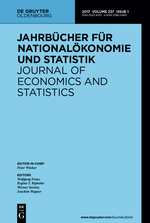
The Research Data Centre of the Halle Institute for Economic Research – Member of the Leibniz Association FDZ-IWH
in: Jahrbücher für Nationalökonomie und Statistik, No. 2, 2017
Abstract
The Halle Institute for Economic Research (IWH) was founded in 1992 and operates three research departments: Macroeconomics, Financial Markets, and Structural Change and Productivity. The IWH’s research structure is designed to foster close interplay between micro and macroeconomic research, however it has its roots in the empirical research conducted on the transition from a planned to a market economy, with a particular focus on East Germany.

Alternatives to GDP - Measuring the Impact of Natural Disasters using Panel Data
in: Journal of Economic and Social Measurement, No. 3, 2016
Abstract
A frequent criticism of GDP states that events that obviously reduce welfare of people can nevertheless increase GDP per capita. We use data of natural disasters as quasi experiments to examine whether alternatives to GDP (Human Development Index, Progress Index, Index of Economic Well-Being and a Happiness Index) lead to more plausible responses to disasters. Applying a Differences-in-Differences approach and estimates from various panels of countries we find no noteworthy differences between the response of real GDP per capita and the responses of suggested alternative welfare measures to a natural disaster except for the Human Development Index.

Green Technologies as Industrial Policy Concept? The South of Saxony-Anhalt as a Case Example
in: List Forum für Wirtschafts- und Finanzpolitik, No. 1, 2015
Abstract
Die bundespolitische Maßnahme der Energiewende und das Erneuerbare-Energien-Gesetz (EEG) als Teil davon haben in Sachsen-Anhalt Hoffnungen ausgelöst, die insbesondere mit der Förderung grüner Technologien in Verbindung standen. Das vorliegende Papier stellt eine Analyse der Wirkungen von Subventionen im Allgemeinen dar und widmet sich dem EEG und seiner Auswirkungen im Speziellen. Dazu werden auch Ergebnisse einer Befragung herangezogen, welche die Industrie- und Handelskammer (IHK) Halle-Dessau bei Unternehmen im südlichen Sachsen-Anhalt durchgeführt hat.

Are there Business Cycles “beyond GDP“? Alternative Measures to GDP at Business Cycle Frequencies
in: Applied Economics Quarterly, No. 2, 2015
Abstract
We discuss properties of alternatives or complements to GDP as a measure of welfare at business cycle frequencies. Our results imply that the suggested indicators show practically no cycle at all and their methodologies can be questioned. First, data are not available at an appropriate quality and frequency. Second, the suggested time series sometimes correlate negatively with each other. Third, cross-section and quasi-panel evidence based on different samples of countries reveals no impact of the stance of the business cycle on some suggested welfare measures. Therefore, alternative welfare measures do not show an equal picture on business cycle frequencies compared to GDP-based measures.
Working Papers
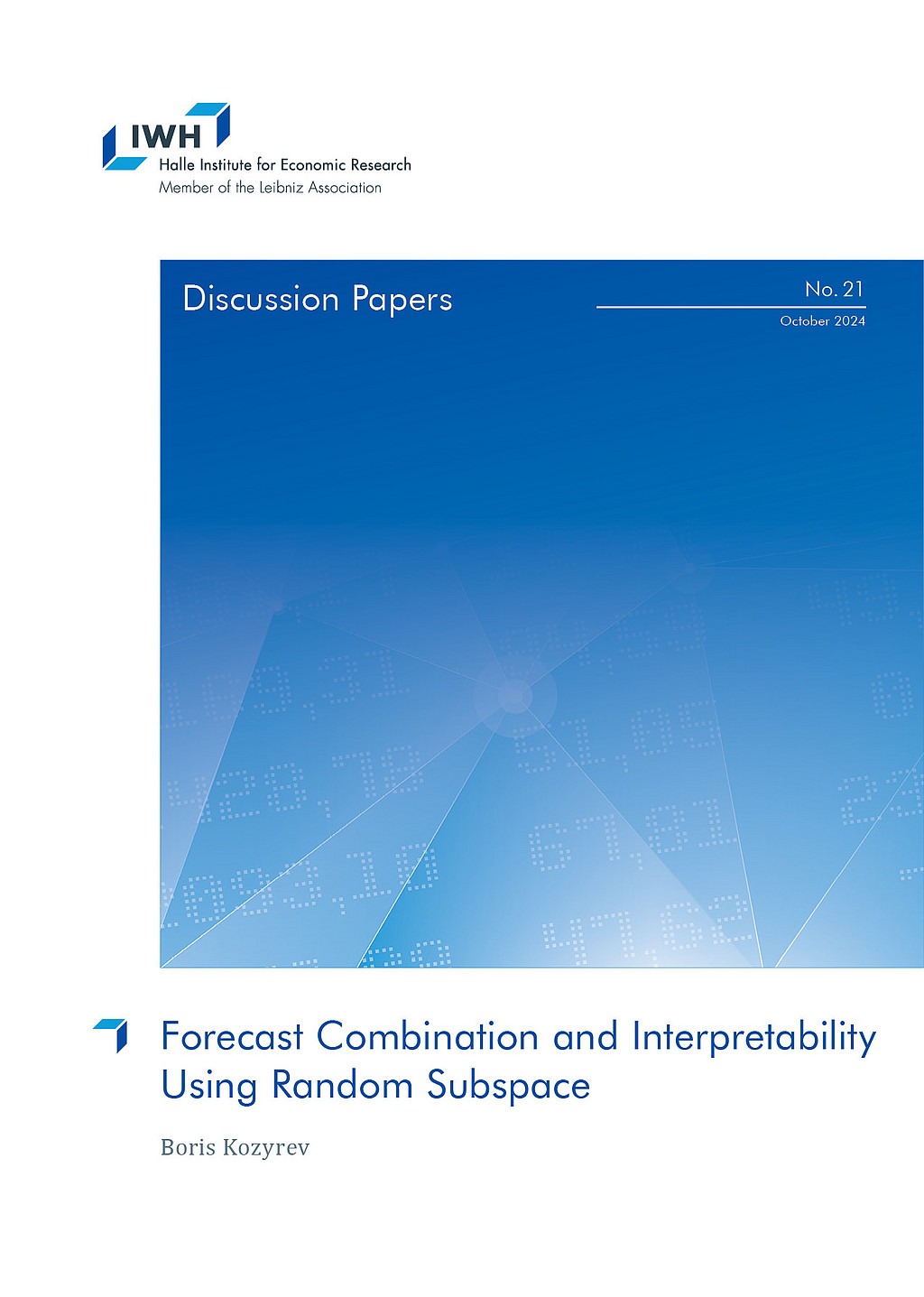
Forecast Combination and Interpretability Using Random Subspace
in: IWH Discussion Papers, No. 21, 2024
Abstract
<p>This paper investigates forecast aggregation via the random subspace regressions method (RSM) and explores the potential link between RSM and the Shapley value decomposition (SVD) using the US GDP growth rates. This technique combination enables handling high-dimensional data and reveals the relative importance of each individual forecast. First, it is possible to enhance forecasting performance in certain practical instances by randomly selecting smaller subsets of individual forecasts and obtaining a new set of predictions based on a regression-based weighting scheme. The optimal value of selected individual forecasts is also empirically studied. Then, a connection between RSM and SVD is proposed, enabling the examination of each individual forecast’s contribution to the final prediction, even when there is a large number of forecasts. This approach is model-agnostic (can be applied to any set of predictions) and facilitates understanding of how the aggregated prediction is obtained based on individual forecasts, which is crucial for decision-makers.</p>
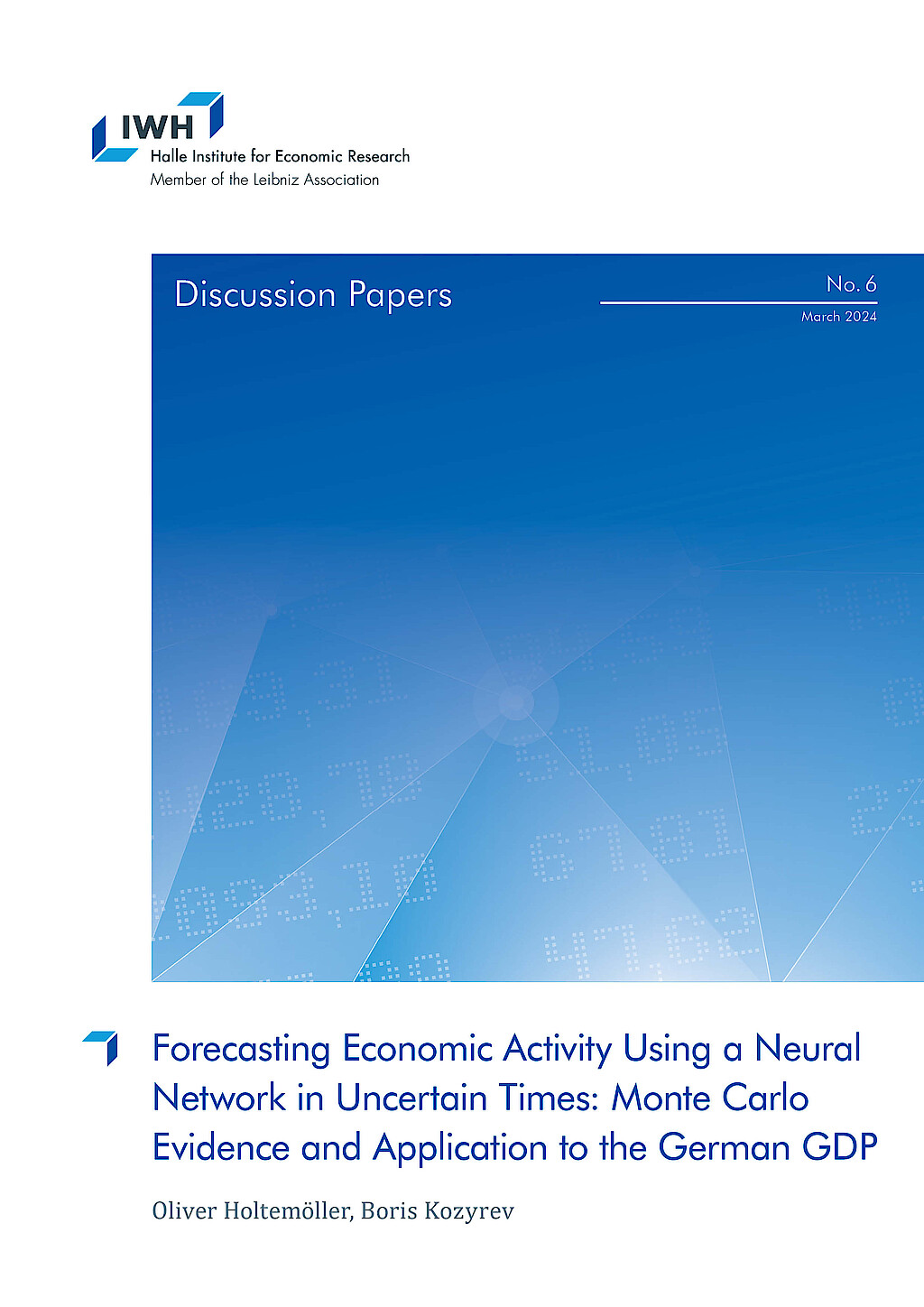
Forecasting Economic Activity Using a Neural Network in Uncertain Times: Monte Carlo Evidence and Application to the German GDP
in: IWH Discussion Papers, No. 6, 2024
Abstract
In this study, we analyzed the forecasting and nowcasting performance of a generalized regression neural network (GRNN). We provide evidence from Monte Carlo simulations for the relative forecast performance of GRNN depending on the data-generating process. We show that GRNN outperforms an autoregressive benchmark model in many practically relevant cases. Then, we applied GRNN to forecast quarterly German GDP growth by extending univariate GRNN to multivariate and mixed-frequency settings. We could distinguish between “normal” times and situations where the time-series behavior is very different from “normal” times such as during the COVID-19 recession and recovery. GRNN was superior in terms of root mean forecast errors compared to an autoregressive model and to more sophisticated approaches such as dynamic factor models if applied appropriately.
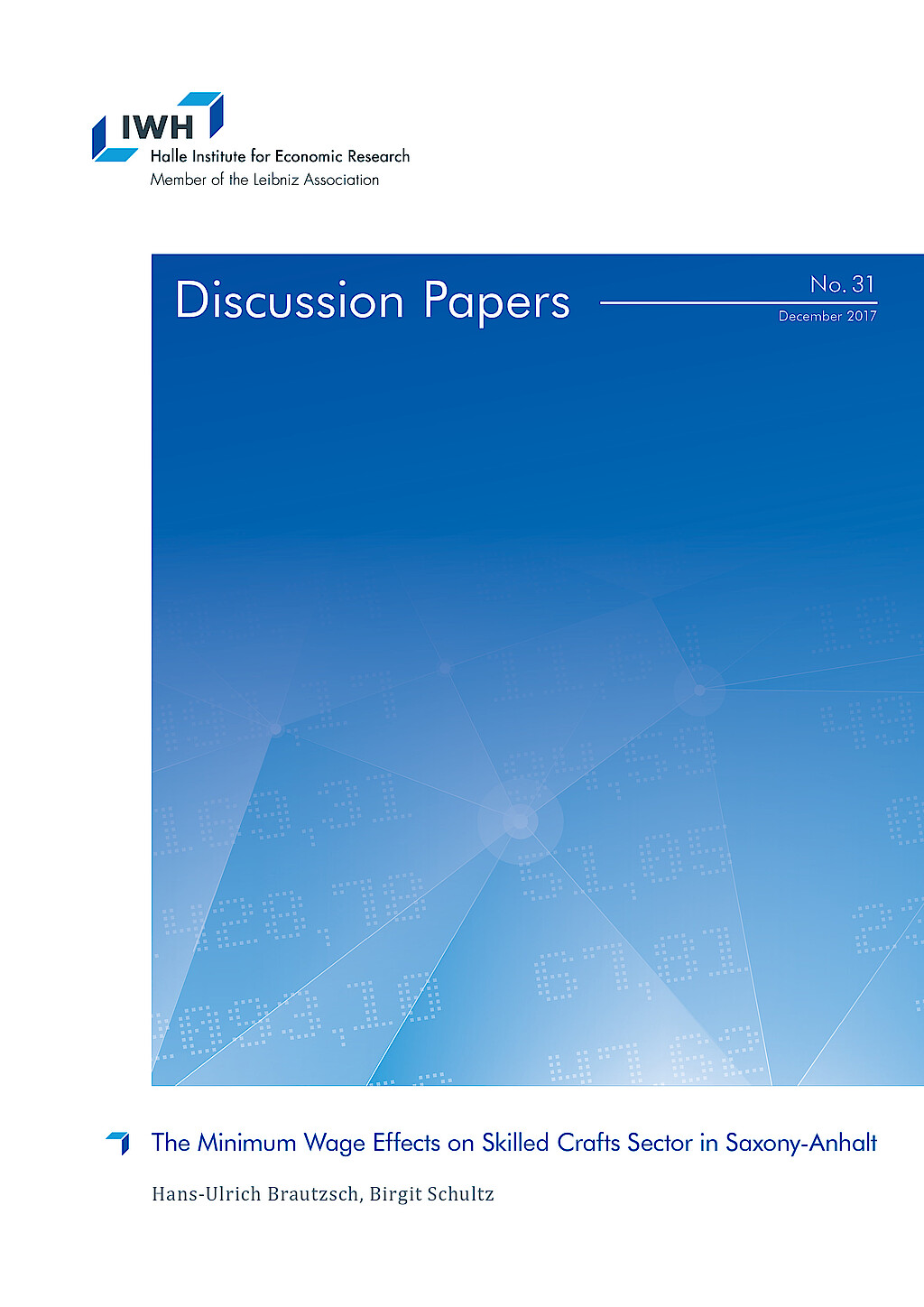
The Minimum Wage Effects on Skilled Crafts Sector in Saxony-Anhalt
in: IWH Discussion Papers, No. 31, 2017
Abstract
This paper examines the effects of the minimum wage introduction in Germany in 2015 on the skilled crafts sector in Saxony-Anhalt. Using novel survey data on the skilled crafts sector in Saxony-Anhalt, we examine three questions: (1) How many employees are affected by the minimum wage introduction in the skilled crafts sector in Saxony- Anhalt? (2) What are the effects of the minimum wage introduction? (3) How have firms reacted to wage increase? We find that about 8% of all employees in the skilled crafts sector in Saxony-Anhalt are directly affected by the minimum wage introduction. A difference-in-difference estimation reveals no significant employment effects of the minimum wage introduction. We test for alternative adjustment strategies and observe a significant increase of output prices.
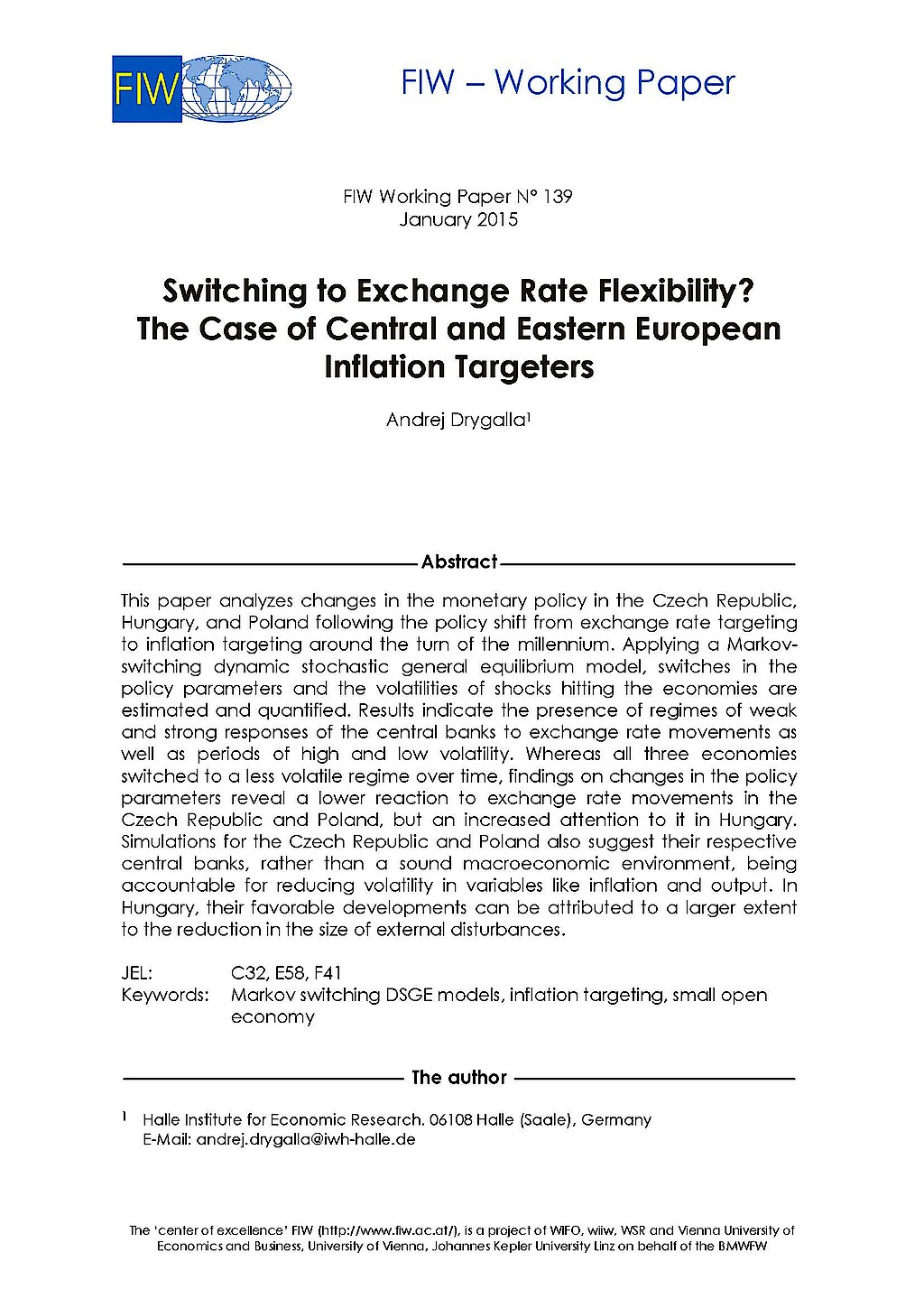
Switching to Exchange Rate Flexibility? The Case of Central and Eastern European Inflation Targeters
in: FIW Working Paper, Nr. 139, No. 139, 2015
Abstract
This paper analyzes changes in the monetary policy in the Czech Republic, Hungary, and Poland following the policy shift from exchange rate targeting to inflation targeting around the turn of the millennium. Applying a Markovswitching dynamic stochastic general equilibrium model, switches in the policy parameters and the volatilities of shocks hitting the economies are estimated and quantified. Results indicate the presence of regimes of weak and strong responses of the central banks to exchange rate movements as well as periods of high and low volatility. Whereas all three economies switched to a less volatile regime over time, findings on changes in the policy parameters reveal a lower reaction to exchange rate movements in the Czech Republic and Poland, but an increased attention to it in Hungary. Simulations for the Czech Republic and Poland also suggest their respective central banks, rather than a sound macroeconomic environment, being accountable for reducing volatility in variables like inflation and output. In Hungary, their favorable developments can be attributed to a larger extent to the reduction in the size of external disturbances.

Die Learning Economy aus Netzwerkperspektive: Mechanismen und Probleme
in: Jenaer Beiträge zur Wirtschaftsforschung, No. 4, 2006
Abstract
Im Mittelpunkt der gegenwärtigen ökonomischen Entwicklung steht verstärkt Wissen als fundamentale Ressource und Triebkraft wirtschaftlichen Wachstums sowie Lernen als der bedeutendste Prozess. Diese Sichtweise wird durch das theoretische Konstrukt der Learning Economy beschrieben. Die Organisationsform des Netzwerkes gilt dabei als geeignetes Arrangement, um die Teilnahme an Lernprozessen sowie den Zugangs zu einer breiten und diversifizierten Wissensbasis zu gewährleisten. In der vorliegenden Arbeit werden im Rahmen der konzeptionellen Charakteristika der Learning Economy die möglichen Ausprägungen einer aktiven Netzwerktätigkeit, die erfolgsdeterminierenden Mechanismen eines Netzwerkes als auch die mit einem Netzwerkarrangement verbundenen Probleme dargelegt. Es zeigt sich einerseits, dass Netzwerke grundsätzlich einen geeigneten Mechanismus darstellen, um den Notwendigkeiten einer Learning Economy zu begegnen. Andererseits wird ersichtlich, dass die Funktionsfähigkeit von Netzwerken und das Ausschöpfen der vorhandenen Möglichkeiten keinesfalls ohne konstante Anstrengungen der Partner und ein detailliertes Verständnis der zentralen Wirkungszusammenhänge erreicht werden kann. Daher ist die zum Teil euphorisch praktizierte Netzwerkdiskussion in mancher Hinsicht differenziert zu betrachten. Besonders der Abfluss ökonomisch sensiblen Wissens, der nicht-wechselseitige Wissensaustausch sowie die Abschottung bestimmter regionaler Netzwerkstrukturen können schwerwiegende Folgen nach sich ziehen.

















